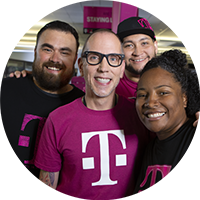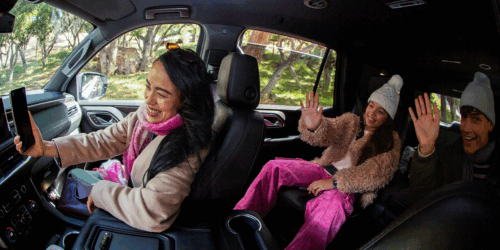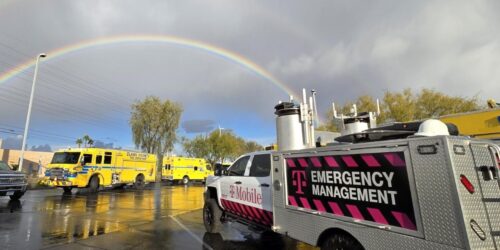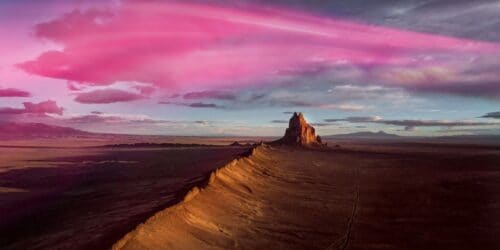In moments of crisis — hurricanes, wildfires, floods — people need the essentials: food, water, shelter.
And connection.
Connectivity is what lets people call for help. Hear from their loved ones. Get out of danger. It’s not just part of daily life — it’s critical infrastructure. And at T-Mobile, we carry that responsibility with real humility.
We don’t take it lightly. We can’t.
Over the past several weeks, storms have devastated communities across the country. Thousands of lives upended. Entire towns flooded. People are hurting. And while no network can prevent a disaster, we’ve been working on something that might help people through one.
It’s called T-Satellite, and the service enables your smartphone to automatically connect to a constellation of 650+ satellites — basically cell towers in space, zooming around the earth 24/7 in what’s called low earth orbit. No towers nearby? No problem. If you can see the sky, you’re connected. That’s our vision.
That means you can text your loved ones from the backcountry. Reach first responders when you’re off the grid. Or receive a flash flood alert when you’re deep in a canyon. It means the smartphone you carry with you everywhere can now be a virtual safety blanket pretty much everywhere you go in the U.S.— peace of mind when it matters most.
Because when connection is counted on more than power, it can’t be limited by zip codes or tower range. It has to reach farther.
This technology will save lives. And it’s available starting today for everyone. Even non-T-Mobile customers.
Here are just a few messages we’ve received during the past six months of testing:
“I am a Sergeant with a state law enforcement agency. I was at a crash scene in a remote area with no cell coverage. I was able to provide updates to my Commander for media updates and assist the owner of the big rig with making arrangements for a tow. At this location there is no cell service for any providers.”
“As a person who hikes in the back country, I felt so secure having this technology with me when I was in and out of service areas for everyone who was with me. As a woman hiker who hikes alone, I can’t stress enough how secure it felt to have access to the phone while in back country. It’s definitely a life saver.”
“I work in a mining area, usually no coverage and it’s frustrating. But last night I had connection and talked with my wife and daughter during my down time. It was amazing!”
This is an important step for public safety, but it’s just the beginning. In October, we’ll add app capabilities — think access to maps, weather information, trail guides, social media and more. And we anticipate extending service to locations outside the U.S., too. Lots more to come!
For more information, visit our T-Satellite page.
T-Satellite in Numbers
- Nearly 2 million people tried T-Satellite during beta test period, with up to 30K daily T-Satellite users
- 3x more messages received with T-Satellite than were sent
- During Hurricanes Helene and Milton: 1M people connected to T-Satellite with +650K SMS messages; +200 Wireless Emergency Alerts (WEAs) sent to all eligible devices, regardless of primary carrier
- During Los Angeles fires: +410K people communicated with loved ones, sending +250K SMS messages; 157 WEAs published, alerting all satellite-capable phones in the area
- During the Oregon wildfires early this month, we connected 6.8K people who sent 24.5K SMS messages and helped distribute seven WEAs via T-Satellite.
- In the recent Texas floods 93.7K people connected to T-Satellite, sending 287K SMS messages and delivered 125 WEAs.




